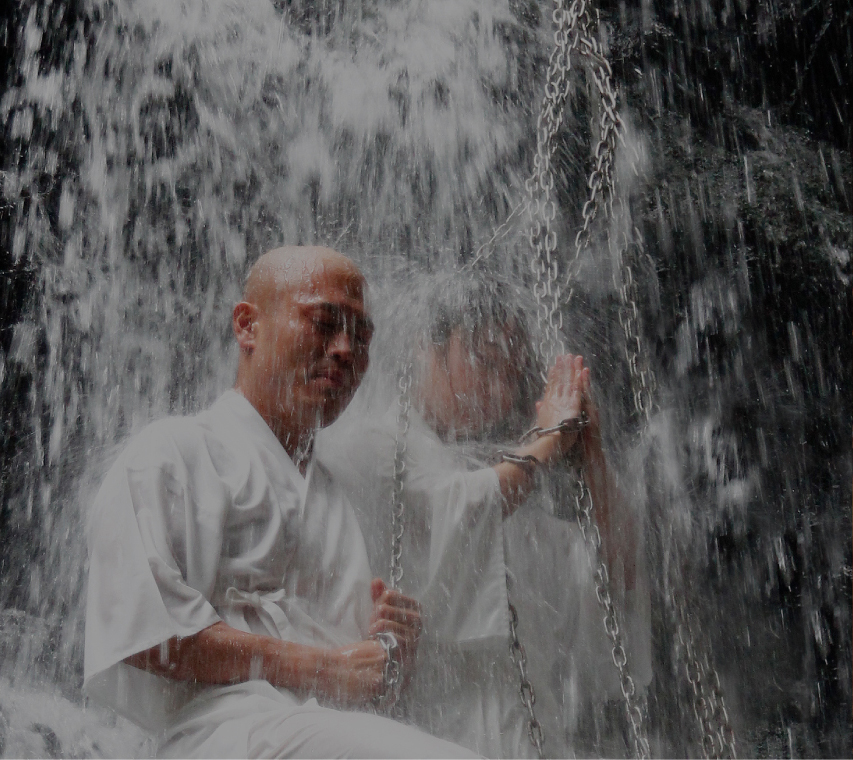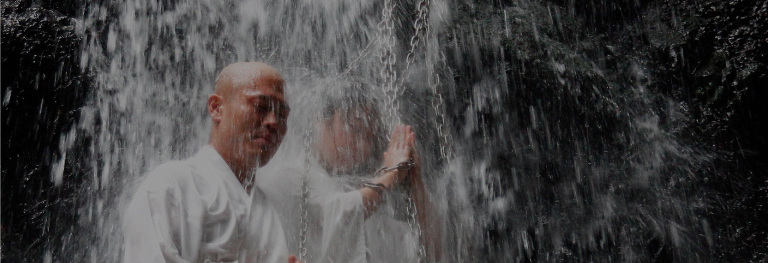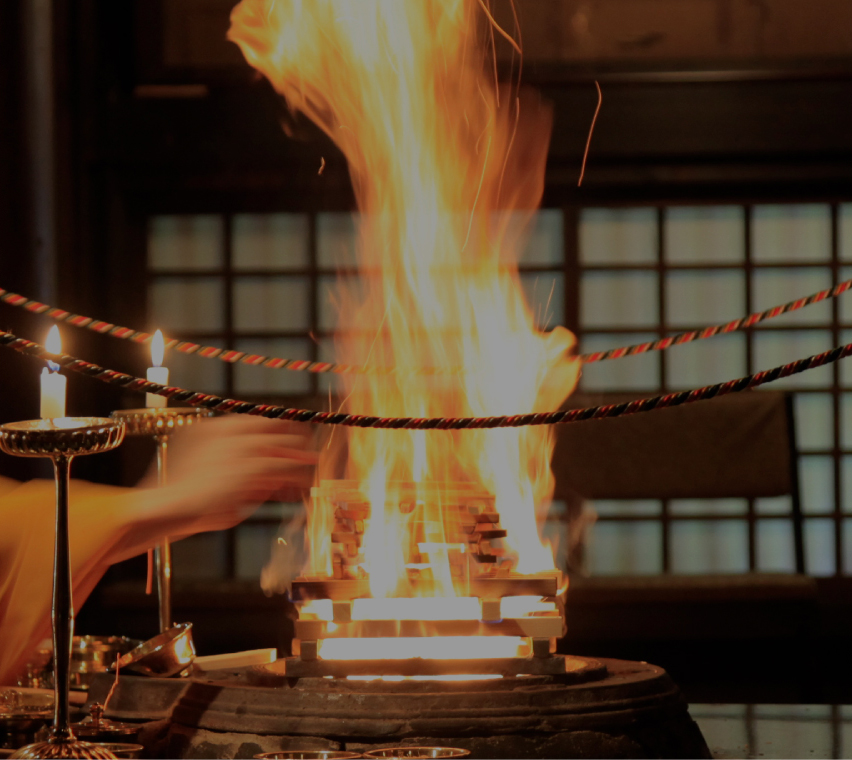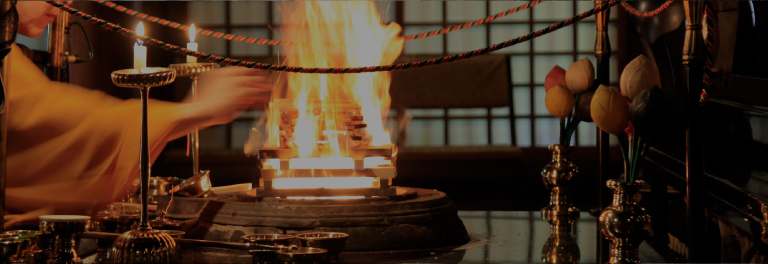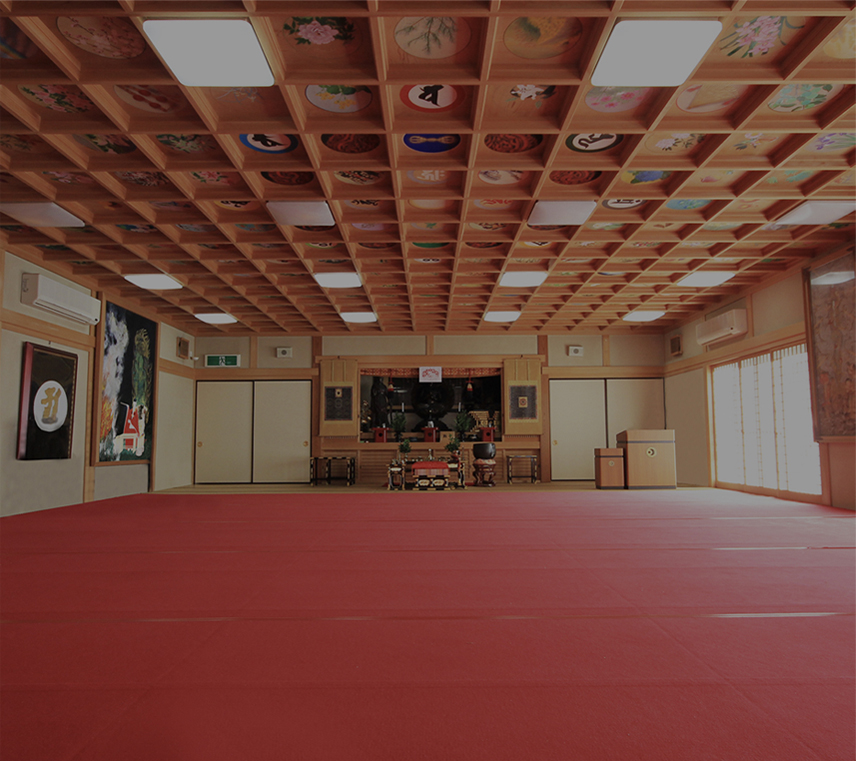歴 史HISTORY
Origin and history
the origin of Mt. Inunaki

A legend of a faithful dog to save his master by continuing barking
In March 890, during the reign of Emperor Uda (889-898), a hunter from Kii province and his dog followed a deer up to the training ground now called “Jabara.” An enormous snake ap-proached the hunter from behind, but he didn’t notice. As he aimed his bow at the deer, his dog began barking loudly. The deer, startled by the noise, ran away. Having missed out on the op-portunity to catch his prey because of the dog’s barking, the hunter got angry and cut off the dog’s head with his woodman's hatchet.

Though detached from the body, the head leapt up and bit into the large snake that was about to swallow up the hunter. After that, the dog per-ished along with the snake. Realizing what had happened, the hunter was filled with remorse. He buried the dog’s remains and made a stupa from his bow. It is said that he entered Ship-poryuji and became a monk, holding memorial services for the dog. Later, Emperor Uda was so impressed by the dog’s faithful behavior that he gave the mountain a new name. It changed its name from Ichijo-suzukine-gatake, (also called Mt. Ichijo, or Suzukine-gatake) to “Mt. Inunaki (dog barking mountain).”
History
In 661, in the reign of Emperor Saimei, En no Gyoja, who is said to be the founder of Shugen-do, founded Mt. Inunaki at the age of 28. It is called “Moto Sanjo” (original summit) because it was founded six years before Mt. Omine in Yamato province. It is said that when En no Gyoja establishd the mountain, Kurikara Tairyu Fudo Myo-o appeared before him. He enshrined Fudo Myo-o as the temple’s principal image. It is said that Kobo Daishi, also known as Kukai, a Japanese Buddhist monk, also practiced Bud-dhist austerities in this mountain and enshrined the Seven Gods of fortune in the seven water-falls. Ever since then, Shipporyuji has conducted rituals to pray for national prosperity, bountiful harvests, and happy lives for all people.
Mt. Inunaki is regarded as one of the oldest sa-cred mountains in Japan. According to recent historical research and advances in the academ-ic study of Shugen-do, Mt. Inunaki is now con-sidered the birthplace of Shugen-do. At pre-sent, Shipporyuji is the head temple of the In-unaki school of Shingon Buddhism, and is one of the greatest holy sites for syncretic faith com-bining Shinto and Buddhism.
The origin of Haku-unin and Shizu’s tears
Inunakisan Shipporyuji is also called Haku-unin. This comes from a sad story about a woman. Long time ago, there was a mountain ascetic called Awaji no Kohijiri. As he paid a visit to the Imperial Palace, a beautiful court lady named Shizume fell in love with him. Because Kohijiri thought it would be a hindrance to his practice to be with her, he rejected Shizume and went to Mt. Inunaki. Shizume could not forget him, so she traveled around various provinces looking for him.
Finally, she heard that Kohijiri was practicing at Mt. Inunaki in Senshu province and went there to meet him. However, she lost her way while struggling against the steep mountain roads, hunger, cold, and thick fog. In the end, she died in agony on the roadside. Villagers gave her a proper burial, and since then, when the sky turned cloudy and began to rain, they would call it “Shizu’s teardrops.” Also, they gave the same name to the clean water that began welling up from the ground where Shizu lay. The tomb of Shizume stands around 100 meters below the main hall on the pathway to the shrine. Water still flows from that spot just like her tears. Since then, the Shoin (reception building) is said to have been called Haku-unin. Also, when you have a wish, by bringing this water home and drinking it every day, it is said that your wish will surely come true. A hall was built to enshrine Shizu near there and has been worshipped as the jizo, a guardian deity, which fulfills people's wishes.
Restoration‐the period of the Northern and Southern Courts
As a strategically important location between Kii, Izumi, and Kawachi provinces, Mt. Inunaki was in very close contact with the Southern Court. Due to the fact that some areas under the rule of the family of Masashige Kusunoki (Masayuki, Masatoki and Masayoshi Kusunoki) coincide with those under the yamabushi (mountain ascetics), the army corps consisted of both samurai and yamabushi from Kasagi, Yoshino, Kokawa, In-unaki and so on. In 1362, Masataka Hashimoto, who was the main war advocate in the Southern Court, invited Saint Shiitsu to Mt. Inunaki and built Fudo-do Hall. Saint Shiitsu rebuilt our tem-ple. He was a Buddhist priest renowned for his wisdom and knowledge. The reason why Masa-taka invited Saint Shiitsu to Mt. Inunaki was not only that Saint Shiitsu was pious, but also that Masataka wanted to capitalize on the powerful political influence of ascetic practitioners in Mt. Inunaki.
The relationship between Masataka Hashimoto and the yamabushi in Mt. Inunaki would continue to flourish. In August 1375, he had Saint Gansho offer 10,000 Buddhist scriptures and perform the ritual to pray for peace. He built fourteen “sobo,” or living quarters for monks, increasing the total to twenty. In a battle that broke out from November to December 1378, Masataka Hashimoto, in spite of his smaller mili-tary unit, successfully held Tsuchimaru Castle against enemy forces led by Ujiharu Hosokawa, Yorimoto Hosokawa and Yoshitada Yanama. This victory was thanks to the support from the yamabushi. In other words, they played an im-portant role in helping Masataka overcome his rivals. Though Masataka ultimately lost the con-flict and pulled back to Kii province, he returned in 1379 and reclaimed Tsuchimaru Castle. He raised an army there, but eventually lost and crossed the mountains to Izumi province in the summer. It is easy to imagine that the yamabushi played an important role in helping him cross the mountains.
The Muromachi Period
In the Muromachi Period, as faith in the Kumano pilgrimage and Katsuragi Shugen-do became popular, our temple also flourished. A lot of old memorial towers still exist across the mountain. In this period, Tanemichi Kujo (1504~1558), the Kanpaku (Imperial adviser) and the Naidaijin (Minister of the Interior), visited our temple and composed a poem. Some courtiers also visited the mountain during this time.
The Azuchi-Momoyama Period
In the Azuchi-Momoyama Period, also known as the Sengoku period (period of warring states), samurai warriors and local ruling clans struggled with each other seeking to expand their influence. Many mountains in Kinki area suffered from fire caused by war and most famous temples were in a tough situation. Also, Nobunaga Oda confiscated several hectares of our territory because things didn’t go as he had expected. In 1585, most of the Buddhist halls, including the main hall were burned down by fire caused by Hideyoshi Toyotomi. Later, however, Hideyosi donated some grains and rebuilt the Takibo (now Shukubo), giving 30 goku (equivalent to 4,500 kilos of rice) as an offering.
The Edo Period
In the Edo Period, with the restoration of Shugen-do, our temple also flourished again. In 1652, Kannon-do Hall was built. During the Manji Period (1658-1661) the main hall was repaired, and the current stone bridge at the base of the main hall was built. More and more people came to show their profound faith, including Yukitaka Okabe, second lord of Kishiwada Domain, who donated rice paddy fields to the temple. In 1720, when the main hall was rebuilt, Yukiyasu Meshino, a wealthy merchant in Sano Domain, donated stone lanterns and Annen Hoshi com-piled a chronicle of the temple’s history. In 1793, Nagatomo Okabe, the eighth lord of Ki-shiwada Domain, donated stone lanterns, and ancestral tablets of the Okabe family were in-stalled. There are stone lanterns and milestones donated by devotees from Yamato Kishu, Edo, Osaka, Sakai, and Kishiwada regions, showing just how widespread devotion to Mt. Inunaki had become. In 1849, “Katsurei Zakki”, the only sur-viving historical document about Katsuragi Shugen-do, was written by Chikou at this tem-ple.

At present day
At the beginning of the Meiji Period, our temple was devastated due to Haibutsu Kishaku (a movement to abolish Buddhism) and the law banning Shugen-do. At the end of the Meiji Period, however, we rebuilt our temple. Since then, we have been contributing to the reconstruction, surviving the World War II. On August 7, 1950, we returned to the past religious order and announced ourselves as Shingon sect Inunaki school. As the central training center of Katsuragi Shugendo, we have been reconstructing our temple through activities such as setting the headquarters of Shugen-do. The total area of this temple is about 284,000㎡ and our temple became the target of worship as a sacred place enshrining Kurikara Tairyuu Fudo Myo-o. Focusing on Katsuragi Shugen-do and ascetic training at the sacred places in the mountains, we are greatly changing ourselves.

The whole mountain is an enormous training spot,
and there are 28 sutra mounds.
In Mt. Inunaki, there are many training spots, such as seven waterfalls, and the mountain itself is regarded as an enormous training spot. Copied sutras were buried in various areas, such as main training spots, waterfalls, rocks, halls, and small shrines just like the 28 sutra mounds of Katsuragi. And these 28 sutra mounds were built in the mountain so that pilgrims can walk around the area for discipline. This enabled many people to experience ascetic practices.
Facilities
-
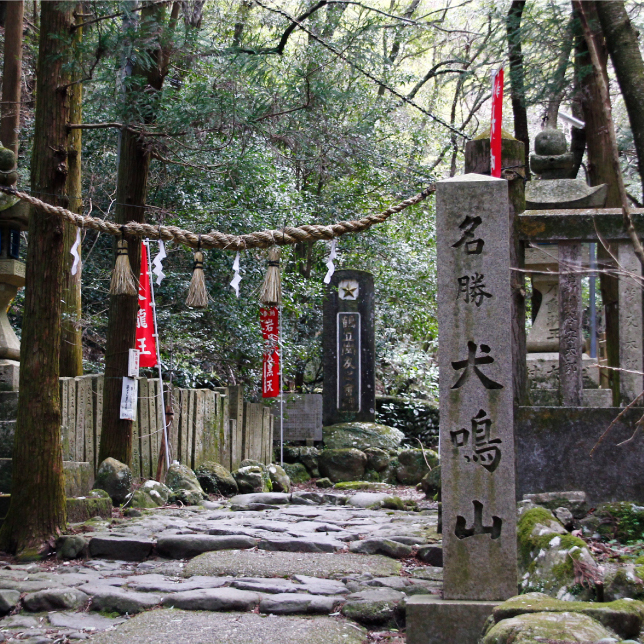 Entrance Path
Entrance Path
-
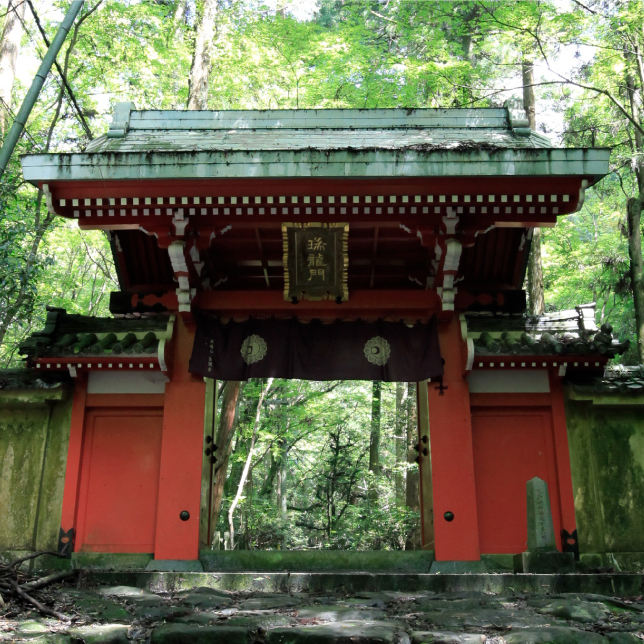 Zuiryumon Gate
Zuiryumon Gate
-
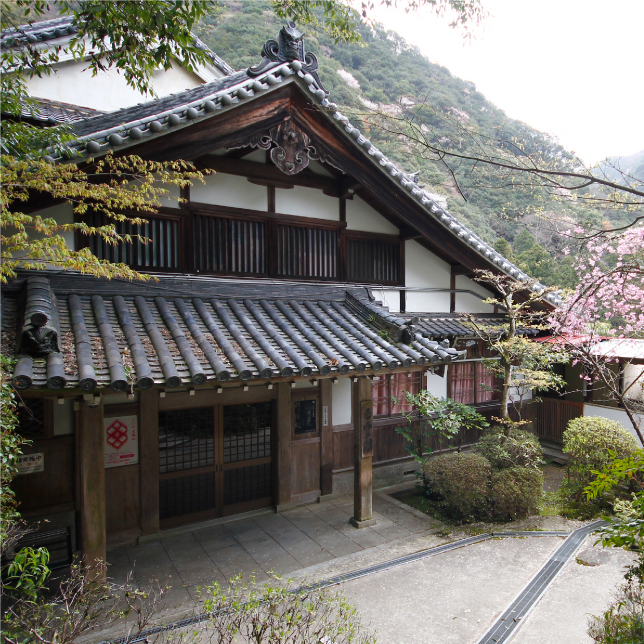 Haku-unkaku
Haku-unkaku
-
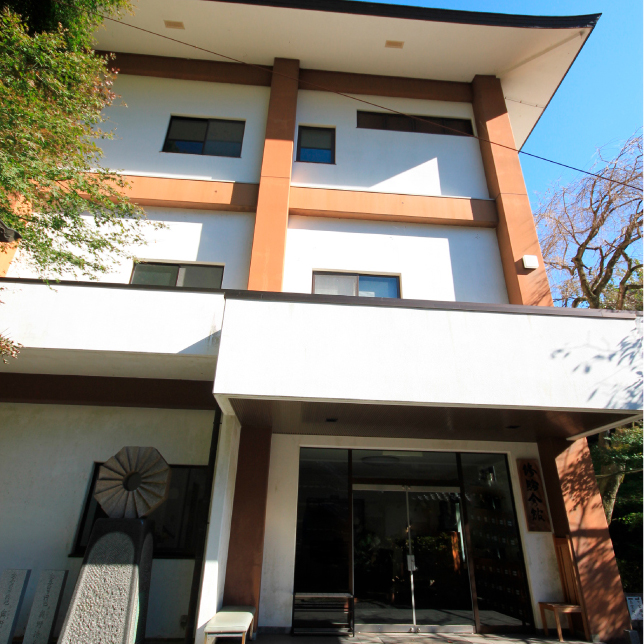 Shugen-do museum
Shugen-do museum
-
 Kokuzo-bosatsuden (Hall of a bodhisattva)
Kokuzo-bosatsuden (Hall of a bodhisattva)
-
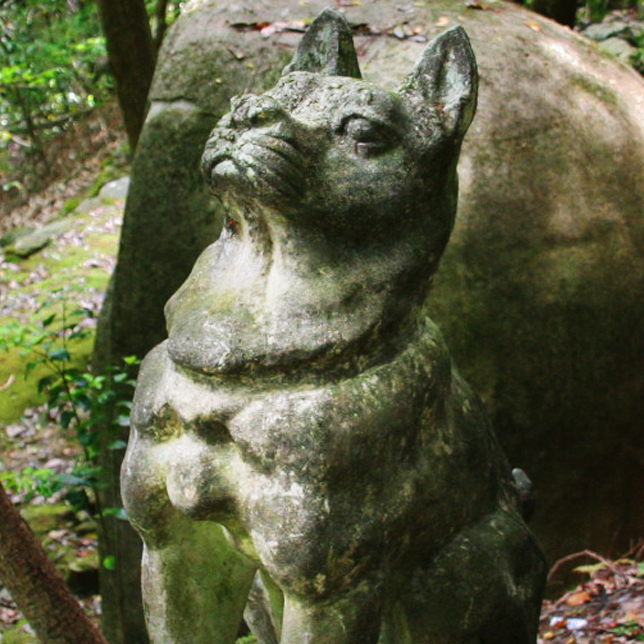 Statue of Giken
Statue of Giken
-
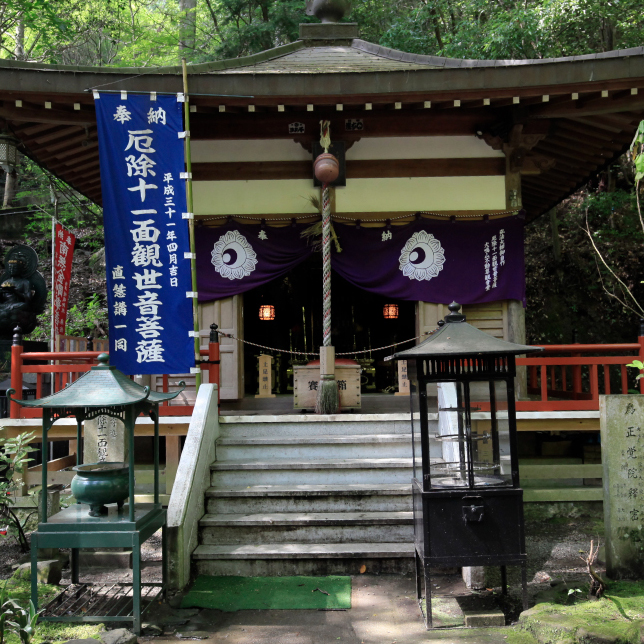 Kannon-do Hall
Kannon-do Hall
-
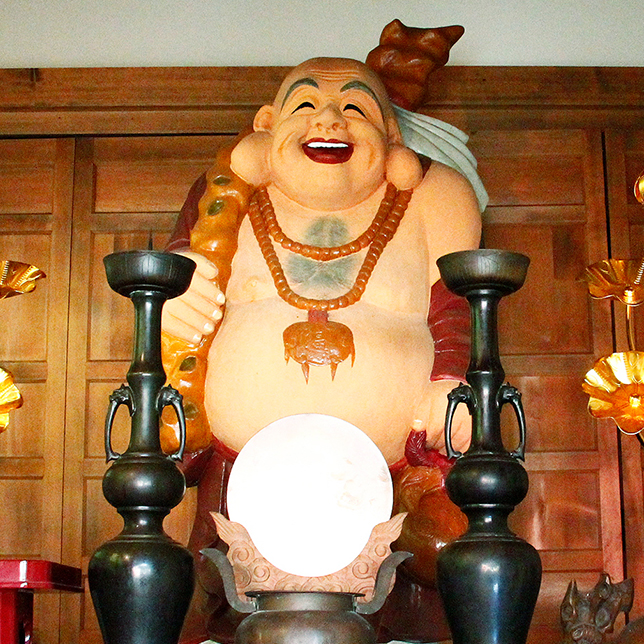 Statue of Hotei
Statue of Hotei
-
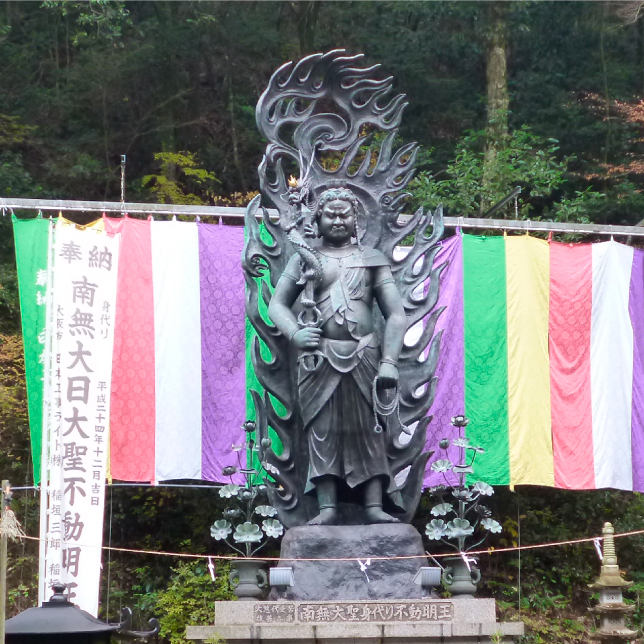 Sacrifice fudo mae square
Sacrifice fudo mae square
-
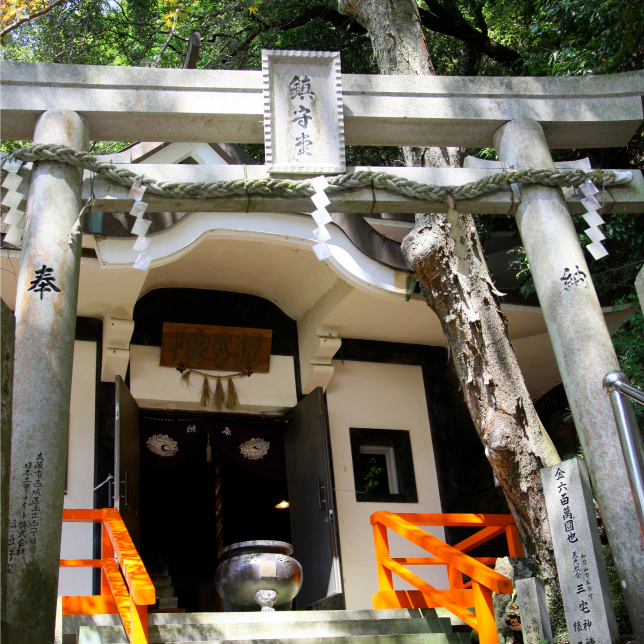 Chinju-do Hall
Chinju-do Hall
-
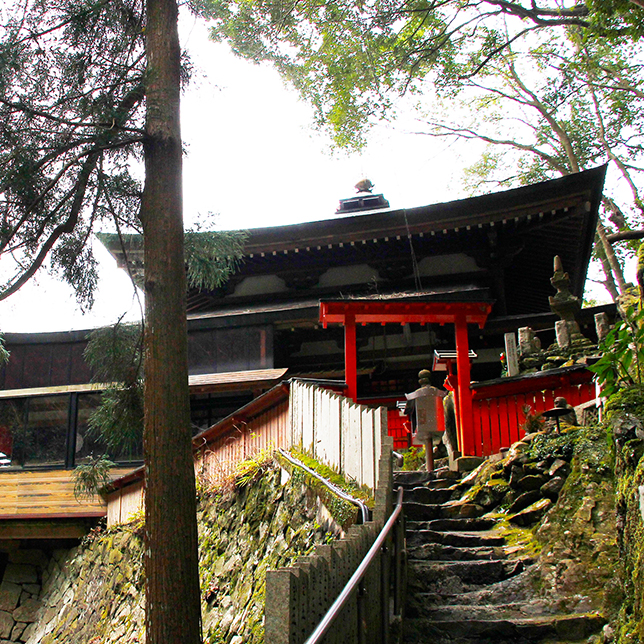 Main Hall
Main Hall
-
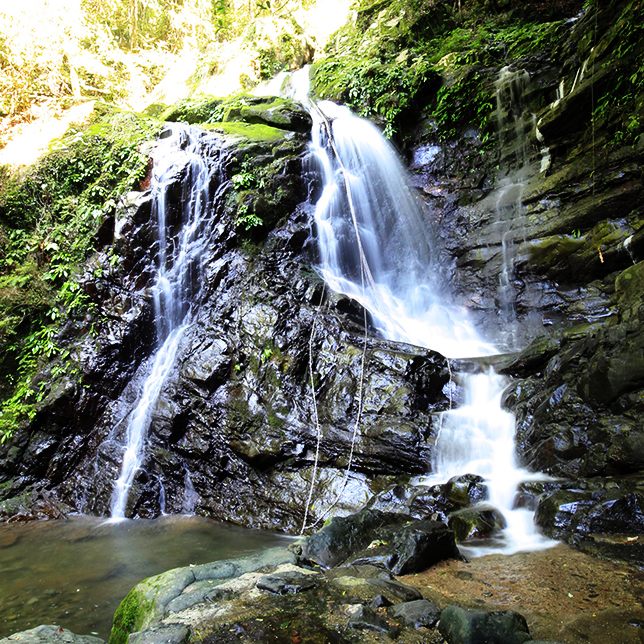 Gyoja-no-taki
Gyoja-no-taki
もっと見る

The origin of the 28 sutra mounds of Katsuragi
Mt. Katsuragi collectively refers to the Izumi and Kongo mountain ranges, whose peaks form the shape of the letter L, running across the boundary of four old provinces, namely Kii, Izumi, Yamato and Kawachi. Its total length is 112 kilometers, and it extends from Kada and Tomogashima in the west to Kamegase near the upper Yamatogawa river in the north. En no Gyoja, who is said to be the founder of the Shugendo tradition, buried each one of the 28 chapters of Hokke-kyo Sutra (Lotus Sutra) in various spots, and built sutra mounds on them. Then, he established 28 places where practitioners can confine themselves to pray. This is the “28 Sutra Mounds of Katsuragi.”
Primeval forest and the overwhelming beauty of the gorge formed by 48 waterfalls
The area surrounding Shipporyuji is in the western part of Mt. Izumi-Kasturtagi, forming gorges in Izumi mountains. It is known as primeval old pine trees and the beauty of the gorge formed by 48 waterfalls. People can enjoy seasonal weather. For example, cherry blossoms in spring, frogs in summer, red leaves in fall. Inunakisan-shipporyuji, where En no Gyoja founded as a training ground for Shugen-do, is the oldest holy spot, healing travelers’ mind and bodies thanks to its fresh mountain stream and nature. As it is listed on the selection of 100 lushly green spots in Osaka, it is the best place for not only religious activities but also hiking. After trekking, why don’t you soak in Inunaki onsen hot spring?
